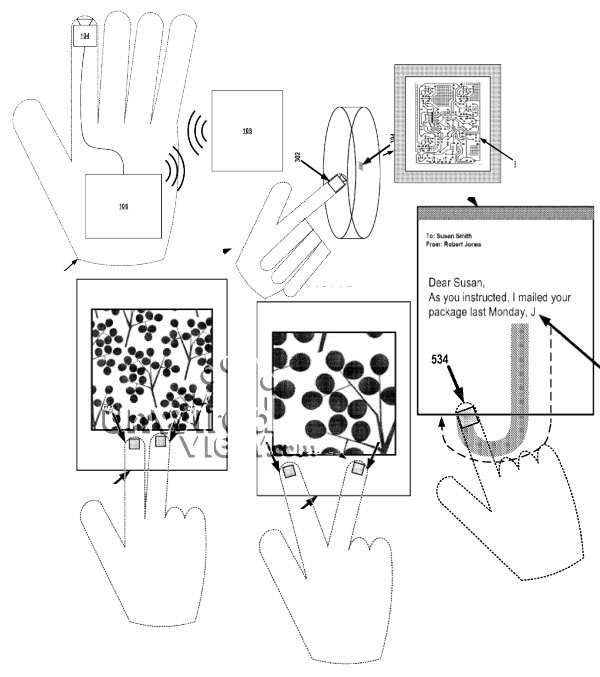Affiliate links on Android Authority may earn us a commission. Learn more.
Google gets smart glove patent, will possibly use alongside Glass project

Aside from touchscreen and speech interfaces, Google is exploring new ways for humans to interact with machines and the Internet. One of the better-publicized ways has been with Project Glass, which is basically an augmented reality approach to UI.
But while Glass provides augmented reality input through eyeglasses, it does not come with a built-in method for interacting with the virtual world. Google has recently applied for a patent for an input technology that involves gloves.

Google’s “seeing with your hand” concept has recently been granted a patent by the US Patent and Trademark Office. The wearable devices involves a combination of cameras on the fingertips, gyroscopes, a compass, accelerometer, motion sensors, CPU, memory, onboard storage and wireless communications. It’s basically a computer you can wear on your hands.
Smart Glove basically acts as a “sensing” device. The fingertip cameras will be able to see surfaces, and are even meant to act as microscopes. As such, a user can theoretically place one’s finger on any surface and – coupled with an AR interface — will be able to see the object magnified.
The accelerometers, compass and motion sensors act as input devices for motion. With the smart gloves, a user can theoretically control interfaces through gestures. Just a flick of your hand, a wave, or even touching a particular surface can translate to signals sent to a computer or device.
Unwired View suggests a few ways a user can take advantage of a combination between the Glass Project and Smart Gloves. This can include interacting with real-world objects with an augmented-reality overlay. Imagine seeing a billboard miles away. You can point your smart gloves toward the general direction, and your augmented-reality glasses will zoom it in, and will even present additional information through overlays.
Of course, no current product is announced yet, as the Smart Glove is just yet a patent. But the fact that the patent has already been granted means Google can now work on making practical applications of the technology or selling the idea to a company that actually would.
In my opinion, though, the idea of having to wear gloves in order to interact with a machine might be too cumbersome. Other companies have already developed spatial-sensing technologies that can detect minute movements even without wearing additional implements.
Granted, Google’s “seeing with your hand” patent is all about sensing through the device. If only all of us guys can look like Tom Cruise on Minority Report, this would be a best-seller.